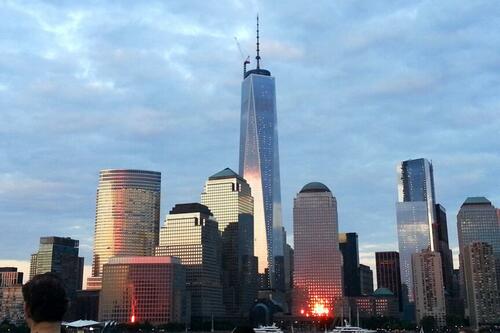Why You Can’t Afford Most Hotels In New York City
Authored by Fred Roeder via RealClearMarkets,
On a Friday night in March 2011, I stayed at an upscale W Hotel on Lexington Avenue in New York City for $124. That hotel later became The Maxwell, but sadly it didn’t survive the pandemic and is now permanently closed. Today the average hotel stay in that same neighborhood costs between $400 and $500 on a Friday night. The surge in hotel prices, particularly for upmarket accommodations, has caught the attention of travelers and investors worldwide. What led to this spike in hotel rates post-pandemic?
Several factors have been at play for the hospitality industry since COVID entered the rearview, resulting in higher prices for travelers.
Supply and Competition
Competition within hospitality plays a crucial role in determining hotel prices. While it might appear that there’s no shortage of lodging options for travelers, the regulatory crackdown on platforms like Airbnb in big cities has redirected travelers back into the arms of traditional hotels, thereby increasing demand.
As the Consumer Choice Center has pointed out, 80 percent of properties were already delisted from Airbnb by October 2023 thanks to New York City’s stringent new short-term rental policies. Because of the new restrictions on temporary rentals, which state that only two paying guests at most can stay for up to 30 days under certain conditions (unobstructed access to the whole residence, short-term registration, owner present on site), many families have no choice but to look for a hotel room during their NYC stay.
Not to mention the massive buying up of hotel room blocks by the city in order to house newly arrived migrant populations. This warps the market for hotel rooms in profound ways. NYC has at least 140 active contracts with city hotels to fill all their vacant rooms, normally valued around $110 per night, but marked up by 73 percent to $190 for a room. Vacancies mean lower prices, but if surrounding inns are full, hotel prices rise for consumers.
This arrangement may not be what hoteliers had in mind for their business, but it has proven highly lucrative for the properties cooperating with the city in these contracts.
Closures of smaller hotels along with industry consolidation reduce the number of options for consumers, which empowers larger hotel chains to raise prices. Moreover, high interest rates on financing discourage the construction of new hotels, leading to an even more constrained supply of rooms. All the while, prices creep even higher.
Consolidated hotel groups have found innovative ways to manage yields and hence increase revenue. This would explain higher average daily rates despite similar or even lower occupancy rates for NYC hotels pre-pandemic.
Traveler’s Tastes Change
Higher prices are also related to consumer preferences, which have evolved significantly in recent years. The pandemic prompted a shift towards safer and more luxurious options, with travelers prioritizing enhanced safety measures and amenities. This shift, coupled with pent-up demand from periods of lockdown, has resulted in a willingness among travelers to pay a premium for upmarket hotels.
Consumers also tend to book closer to their travel dates and are proving reluctant to commit far in advance. A few years of uncertainty around travel has created a more cautious average traveler. On top of that, the normalization of remote work has blurred the lines between business and leisure travel, leading to longer average stays.
People are taking personal vacations and then staying there longer while they transition back into work mode.
Supply Chains and Labor
Amidst all these trends, operational costs rise with minimum wage hikes, labor shortages, crunched supply chains overseas, and ever-increasing taxes in America’s largest cities. The labor shortfall is not insignificant and leaves hotels struggling to meet the high demand for rooms. The costs are likely being passed on to consumers in the form of higher prices.
It’s also very possible that hotels are eager to recoup losses incurred during the pandemic period, driving them to maximize revenue through price adjustments as demand rebounds in major travel markets.
It’s a perfect storm of industry trends, regulatory pressures on competitors, and consumer behavior driving up the average price of a hotel stay in NYC and other large cities. Is there anything that can be done?
Ideally, as prices rise, consumers will see a new wave of entrepreneurial competition offering market solutions and testing out new models for lodging travelers. For the sake of all our wallets, let’s hope that happens sooner rather than later.
Tyler Durden
Fri, 04/26/2024 – 19:40
via ZeroHedge News https://ift.tt/mkjgX3h Tyler Durden
